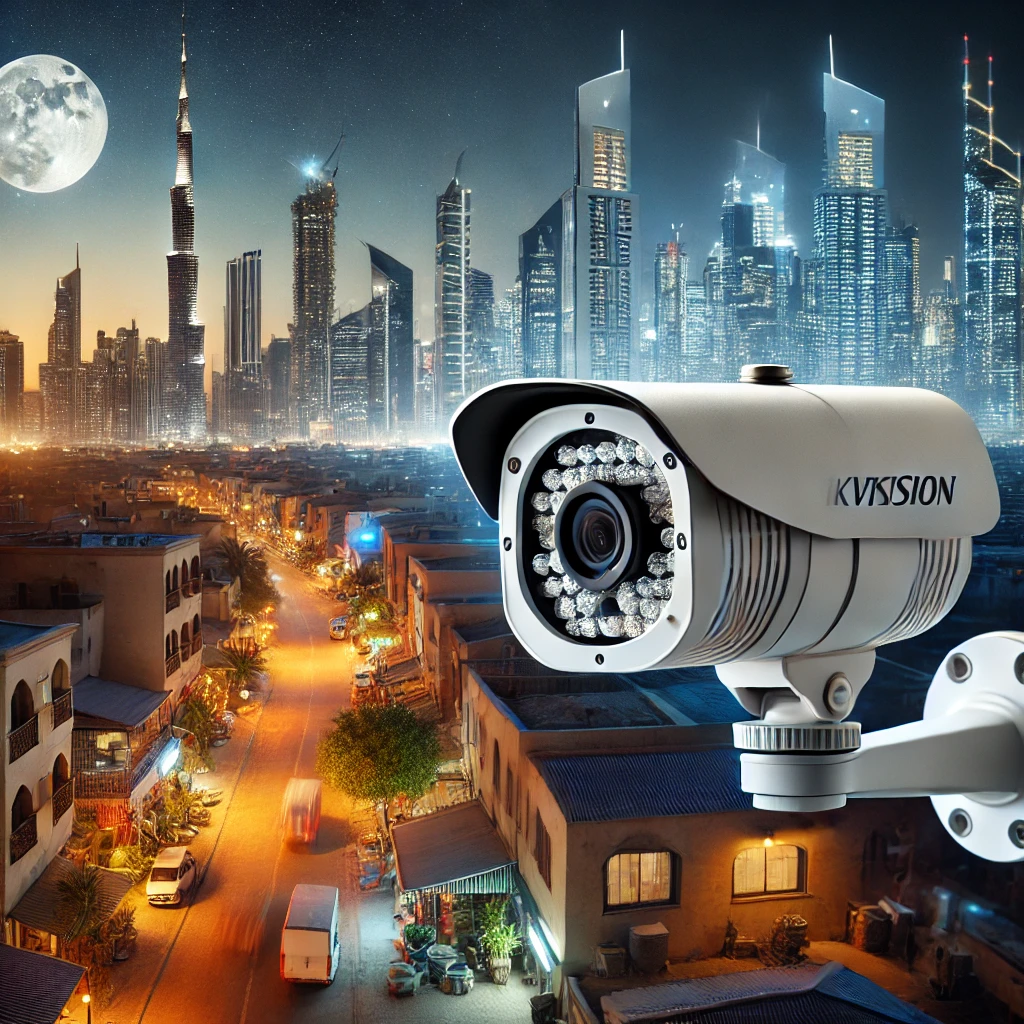Smart Hybrid Light Technology – Low-Light Imaging Africa Hikvision Leave a comment
- Smart Hybrid Light Technology
- refers to an advanced imaging system used in security cameras to capture high-quality images in low-light or nighttime conditions. It is particularly beneficial for surveillance purposes where visibility is critical even in challenging lighting environments.
- Key Features of Smart Hybrid Light Technology for Low-Light Imaging:
- Adaptive Lighting The system can switch between infrared (IR) and visible light depending on the environment. In extremely dark conditions, infrared lighting is used, and as ambient light improves, visible light is activated for better color accuracy.
- Color Imaging at Night: While traditional IR cameras capture monochromatic images in the dark, smart hybrid systems can maintain color integrity even at low-light levels, ensuring clearer and more detailed images.
- Light Sensitivity: Hybrid light technology utilizes sensors that are highly sensitive to light, allowing the camera to work effectively in various lighting conditions, including dusk, dawn, and complete darkness.
- Energy Efficiency: Smart hybrid systems adjust the intensity of the light based on environmental needs, conserving energy and ensuring longer-lasting performance.
- AI-Enhanced Imaging: Integrated AI algorithms help enhance image clarity, noise reduction, and object recognition in low-light conditions, making it easier to identify faces or license plates in real-time.
- This technology is typically used in high-end security cameras from brands like Dahua, Hikvision, and Provision, helping improve surveillance quality in residential, commercial, or industrial applications
-
Smart Hybrid Light Technology in 4MP and 8MP
cameras primarily lies in the image resolution and the level of detail each camera can capture. Both 4MP and 8MP cameras can use Smart Hybrid Light Technology for better low-light imaging, but their performance varies due to resolution differences.
Key Differences between 4MP and 8MP Cameras with Smart Hybrid Light Technology:
1. Resolution:
- 4MP Camera:
- A 4MP camera typically offers a resolution of 2560 x 1440 pixels. This provides good image quality and sufficient detail for most security applications like residential, small businesses, or moderate surveillance.
- 8MP Camera:
- An 8MP camera offers a resolution of 3840 x 2160 pixels (also referred to as 4K). This resolution is almost double that of 4MP cameras, providing much more detail and clarity, which is ideal for applications requiring high-definition surveillance, such as airports, large commercial properties, and city monitoring.
2. Level of Detail:
- 4MP Camera:
- Captures moderate levels of detail. Ideal for scenarios where large-scale zooming or very fine details (e.g., identifying small objects or facial details from a distance) are not the primary focus.
- 8MP Camera:
- Captures significantly more detail, making it easier to zoom in on specific parts of the image without losing clarity. Useful for identifying facial features, license plates, and other fine details from greater distances.
3. File Size and Bandwidth:
- 4MP Camera:
- Generates smaller file sizes compared to 8MP cameras, which means it uses less storage and requires less bandwidth for transmitting video data. It’s more efficient in terms of data usage.
- 8MP Camera:
- Produces larger file sizes and requires more storage and bandwidth. You may need a more robust network setup to handle the higher data flow, but it compensates by offering higher quality video.
4. Field of View:
- 4MP Camera:
- A 4MP camera provides a standard field of view, but the clarity might reduce as you zoom in or monitor wide areas.
- 8MP Camera:
- An 8MP camera provides a much larger field of view while maintaining clarity. It can cover larger areas without sacrificing image quality, making it suitable for expansive surveillance areas.
5. Application:
- 4MP Camera:
- Suitable for homes, small to medium businesses, and environments where high-level details aren’t as critical.
- 8MP Camera:
- Preferred for large-scale surveillance systems where detailed image capture is essential, such as in airports, banks, or industrial areas.
In Summary:
- 4MP Cameras with Smart Hybrid Light Technology offer a balance of performance, bandwidth efficiency, and good low-light performance.
- 8MP Cameras with the same technology provide superior resolution and detail, which is better for applications requiring extensive clarity, especially in low-light conditions.
The choice between the two depends on the specific needs of your surveillance setup. If you need higher resolution and detailed zoom-in capabilities, an 8MP camera is ideal. For standard security needs, a 4MP camera
- 4MP Camera:
-

